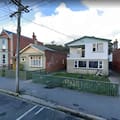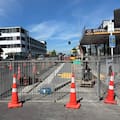New Zealand property values rose 0.1% in September, ending five consecutive months of declining prices, according to data firm Cotality.
The national median value now sits at $810,141, following a cumulative 1.6% drop over the five months between April and August.
Tauranga recorded the strongest growth among main centres in September, rising 1.3%, while Christchurch lifted 0.6% and Dunedin increased 0.3%.
Hamilton remained flat, while Auckland dipped 0.2% and Wellington fell 0.4%.
But while growth was slow in urban centres, provincial areas were doing better.
Apart from a drop in values in Rotorua and a small dip in Whangārei, many other provincial towns rose, including Gisborne by 2.5%, Invercargill 0.8% and New Plymouth 0.7%.

Cotality chief property economist Kelvin Davidson said the marginal national rise in values aligns with lower mortgage rates and "early tentative signs" of economic recovery.
"That said, September’s rise in values was clearly marginal, and it’s far too early to conclude that this marks the start of a new, sustained lift," he said.
"After all, the stock of available listings – while falling – remains relatively high, and caution continues to pervade the market."

Davidson added that there was a "clear urban-rural property market divergence".
He said: “Of course, there’s always two sides to the housing market coin, and it’s a good time to be a buyer, provided they can get the finance.
"In particular, first home buyers remain a strong presence in the market and mortgaged multiple property owners have returned in greater numbers too."
Cotality was formerly known as CoreLogic before a recent name change.
The morning's headlines in 90 seconds, including people missing after a house fire, a leading voice for conservation dies, and the new chubby champ of the internet. (Source: 1News)
'Two-speed' economy apparent
According to Cotality, there was a "growing body of evidence that the two-speed economy" – with provincial areas outperforming on the back of strong agricultural returns – might be starting to filter into the property market too.
“We shouldn’t get carried away with any flow-on effects from the farming upturn into the provincial property markets, given there’s still a degree of uncertainty across the wider economy," Davidson said.
"But September nevertheless showed a pretty clear urban-rural property market divergence, which we’ll keep a close eye on.”

Additionally, looking ahead, the outlook has changed in recent months.
“It now seems pretty likely the official cash rate will go below the previously-expected trough of 2.5%, as the Reserve Bank tries to shore up the economy and reduce spare capacity," Davidson said.
"This also suggests that mortgage rates could have a bit further to fall yet, especially for floating or short-term fixed loans.
"With around 45% of existing mortgages either floating or fixed and set to reprice within the next six months, those borrowers will be feeling a little happier.”
He said there was "growing scope for values to start rising more consistently in 2026."
"Albeit a fresh boom seems unlikely – especially with the economy and labour market only set to recover slowly," Davidson concluded.
“The recent rise in the physical supply of property relative to population, as well as the lurking restraint of debt to income ratio limits for mortgage lending are other reasons for caution about house price growth over the medium term."



















SHARE ME